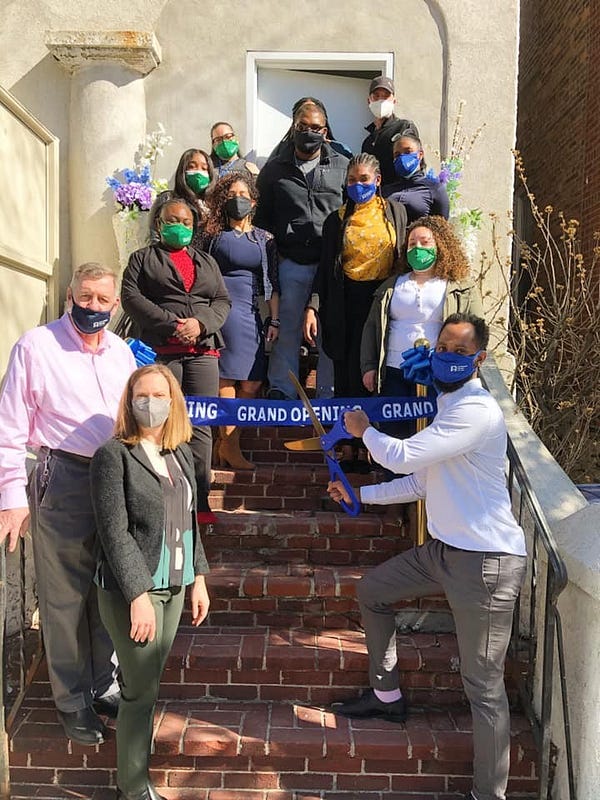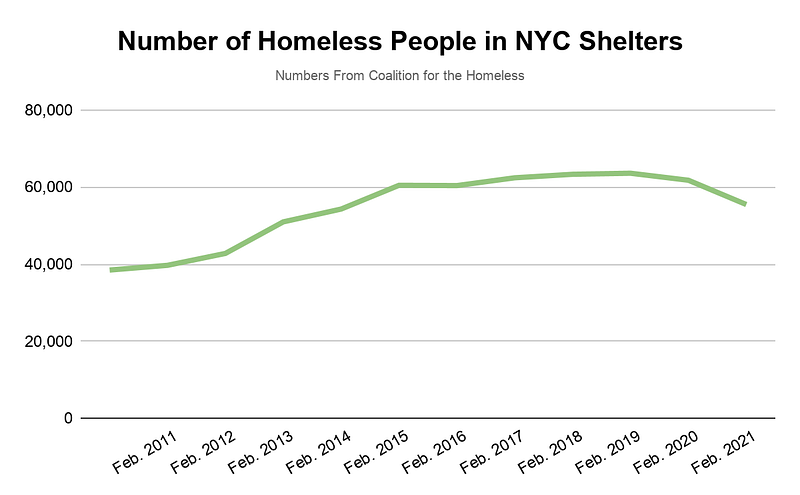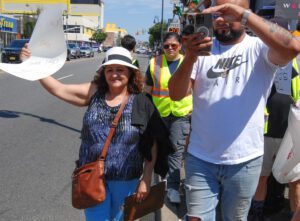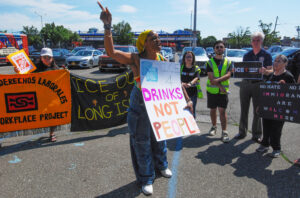By Rebecca Williams
In 1983, a man stood on a Hempstead street eating his meal out of a garbage can. He didn’t know it, but this single act would spark the beginning of the now-largest soup kitchen on Long Island.
The Interfaith Nutrition Network, or INN, began as a nameless group of Hofstra University students, led by the university’s chaplain, Michael Moran, acccording to the INN website. They were volunteering at a Brooklyn soup kitchen in the 1980s. After witnessing the anonymous man in their own neighborhood struggling to find food, the group knew they needed to adapt their services locally. With the help of Pat O’Connor, mother of nine, 30 more volunteers soon joined the team, and the organization officially began.
The INN has since expanded its services to include emergency shelters, long-term housing and other programs to assist people without homes — or guests, as The INN calls them.
“They realized it’s not just about food,” said Dana Lopez, the INN’s director of marketing and communications.“They realized that people needed more in order to survive.”
Lopez said that need is what spurred the emergence of their shelters and housing to meet the needs of the community. The Center for Transformative Change is the most recent addition to the INN’s programs. It began in 2016 and includes a resource center and clothing boutique, which provides donated clothing to the INN’s guests.
Clothing is given out for job interviews, work, school and cold weather. Lopez said, however, that there are other types of clothing that the INN makes available for unexpected situations.
“Sometimes people have to go to a funeral,” she said, “or to a wedding or someplace where they don’t have the proper clothing to be presentable in certain places, so that’s where we come in.”
While the INN works to serve homeless and hungry Long Islanders, many other parts of New York State have shelters and programs, as well. The Covenant House is New York City’s largest provider for homeless youth and offers a wide variety of programs.
The Covenant House is open 24-7, 365 days a year for people needing a place to sleep for the night or for those who require extra assistance to get back on their feet. According to Cathy Batista, senior vice president of residential and support services, Covenant House includes a shelter that can house 120 children a night, a mother-and-child program, a safe house for trafficking survivors and an assistance program to help around 100 young adults in New York City rent and keep apartments.

Although Covenant House offers short- and long-term programs, all guests receive the same amount of care.
“We work with them on what is the next step,” Batista said. “What does that look like? Is that reunifying their family? Is it going to another long-term program?”
For those who choose a longer-term path at Covenant House, the Rights of Passage program is a 24-month transitional living program in the Bronx for 15- to 21-year-olds. Struggling youth can come out of Covenant shelters or be referred by other shelters to enter the Rights of Passage Program. They are then moved into a dorm-like facility with roommates, full kitchens and a 24-hour staff.
“They’re coming to a place where they have a place to sleep,” she said, “but also learning skills.”

At Rights of Passage, staff members teach young people how to cook meals and assist them with finding employment or finishing school. Batista said the program also opens bank accounts for these youth and teaches financial literacy. When they do leave, they are then prepared with skills and tools needed to survive.
It is extremely important for those who leave these programs to be equipped with anything they could need so that they do not fall victim again to homelessness, advocates say. This is a huge concern in the U.S., especially in New York. According to endhomelessness.org, New York’s total homeless population increased by 47 percent from 2007 to 2019.
In those same years, the state’s total sheltered population increased by 54 percent and the unsheltered population by 24 percent. This shows how necessary shelters are throughout the state, advocates say.

According to the Coalition for the Homeless, there were 55,501 homeless people sleeping in New York City shelters each night this February. The most common factors behind homelessness include lack of affordable housing, eviction, domestic violence and job loss. The Coalition for the Homeless also reveals homeless single adults have “higher rates of serious mental illness” and “addiction disorders.”
Volunteers of America in upstate New York focuses on another factor of homelessness: incarceration. VOA has been around for 125 years and has two facilities in Rochester and Binghamton that help parolees find transitional housing programs.
Mike Dedee, former director of the Reentry Residential Center and current regional vice president of housing services, said there are many struggles for recently incarcerated individuals.
“Some of the difficulties are the barriers that we might find in trying to get them into stable housing or employment,” Dedee said, “ because of either discrimination or legal restrictions.”
There are also social restrictions, however. One of the main goals of VOA’s transitional housing is to prevent people from falling back into their previous life and committing more crimes by securing stable housing for them and assisting them with employment. Dedee said around 60 percent of recently incarcerated people commit another crime within three years after release.
Volunteers of America also has 34 other programs; among those are pre-K programs and child care up to age 12, a family shelter in Rochester and supportive housing for more than 120 residents.
“Our goal is to not just interrupt homelessness,” Dedee said, “but to end homelessness.”
Although some program approaches have been altered because of Covid-19 precautions, Volunteers of America has not stopped providing assistance to those in need. The team installed wireless networks in four supportive housing facilities and distributed over 120 tablets to residents to provide remote case management services.
“We’ve been open since the beginning” of the pandemic, said Lynn Sullivan, CEO and president of VOA. “We’ve never closed… We went virtual in many of the early days, but we never stopped serving the community or employing our staff.”
Similarly, Covenant House and the INN both adjusted in order to continue to serve their communities during the pandemic. The INN converted its cafeteria-style kitchen to serve pre-packaged meals that can be picked out without contact. Covenant House created a “wellness floor” for quarantining in individual rooms. New additions to Covenant House are quarantined, tested for Covid-19 and cleared before entering housing.
Having shelters and programs across New York State helps to target many different communities experiencing homelessness. If you are interested in volunteering at or donating to one of these facilities, you can visit their websites. If you or someone you know is experiencing homelessness, one of these Covid-safe facilities could get you the help you need.








